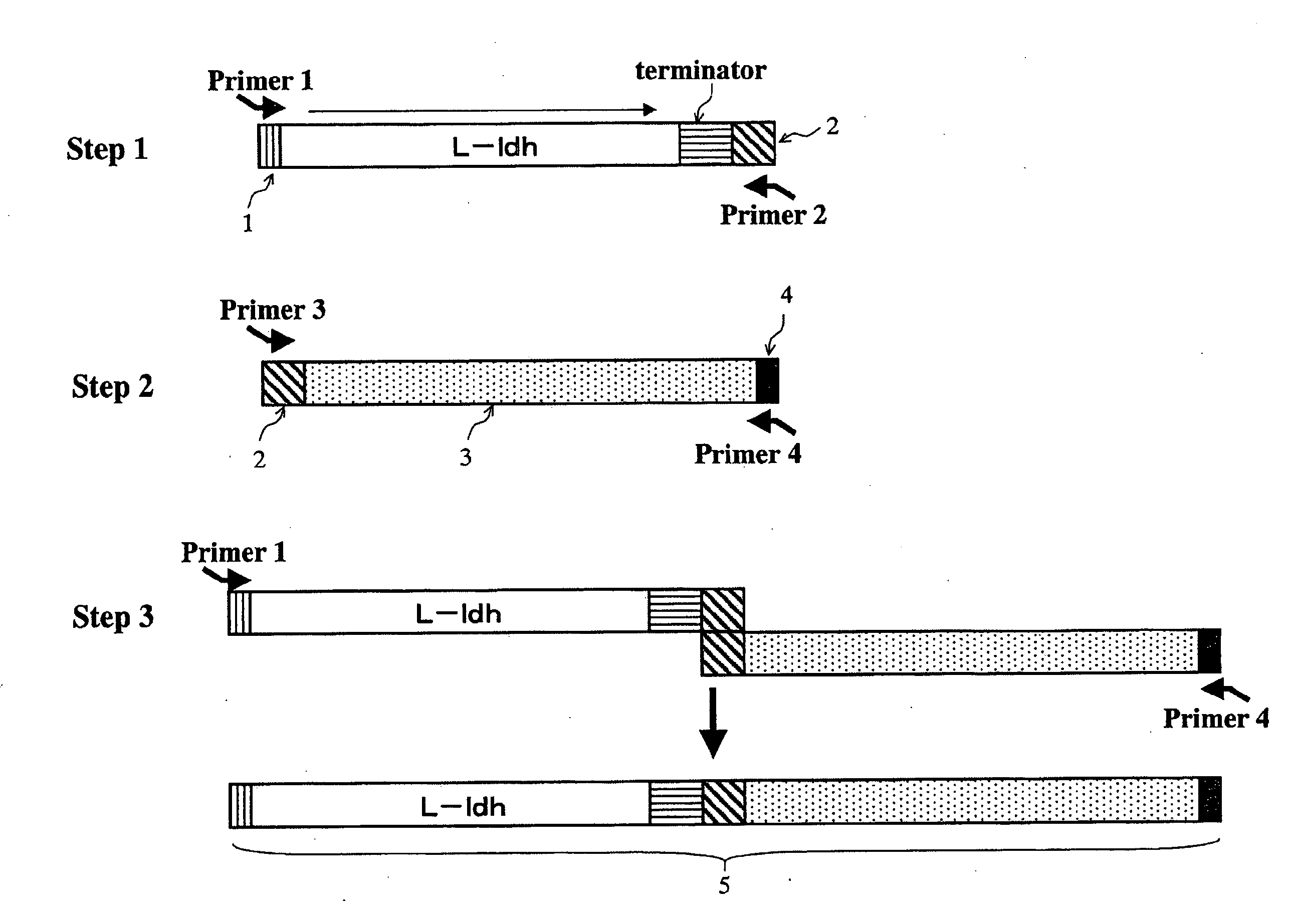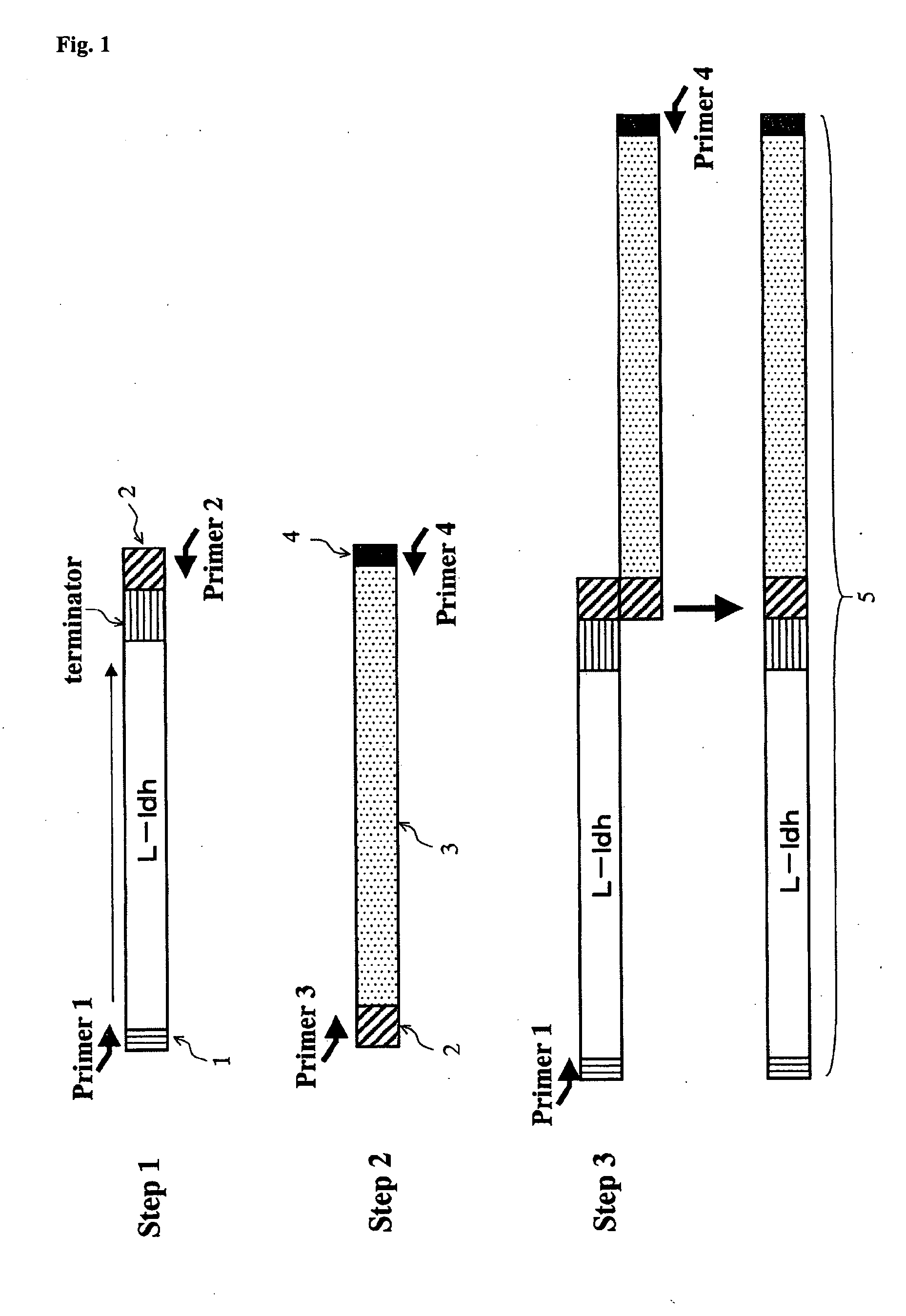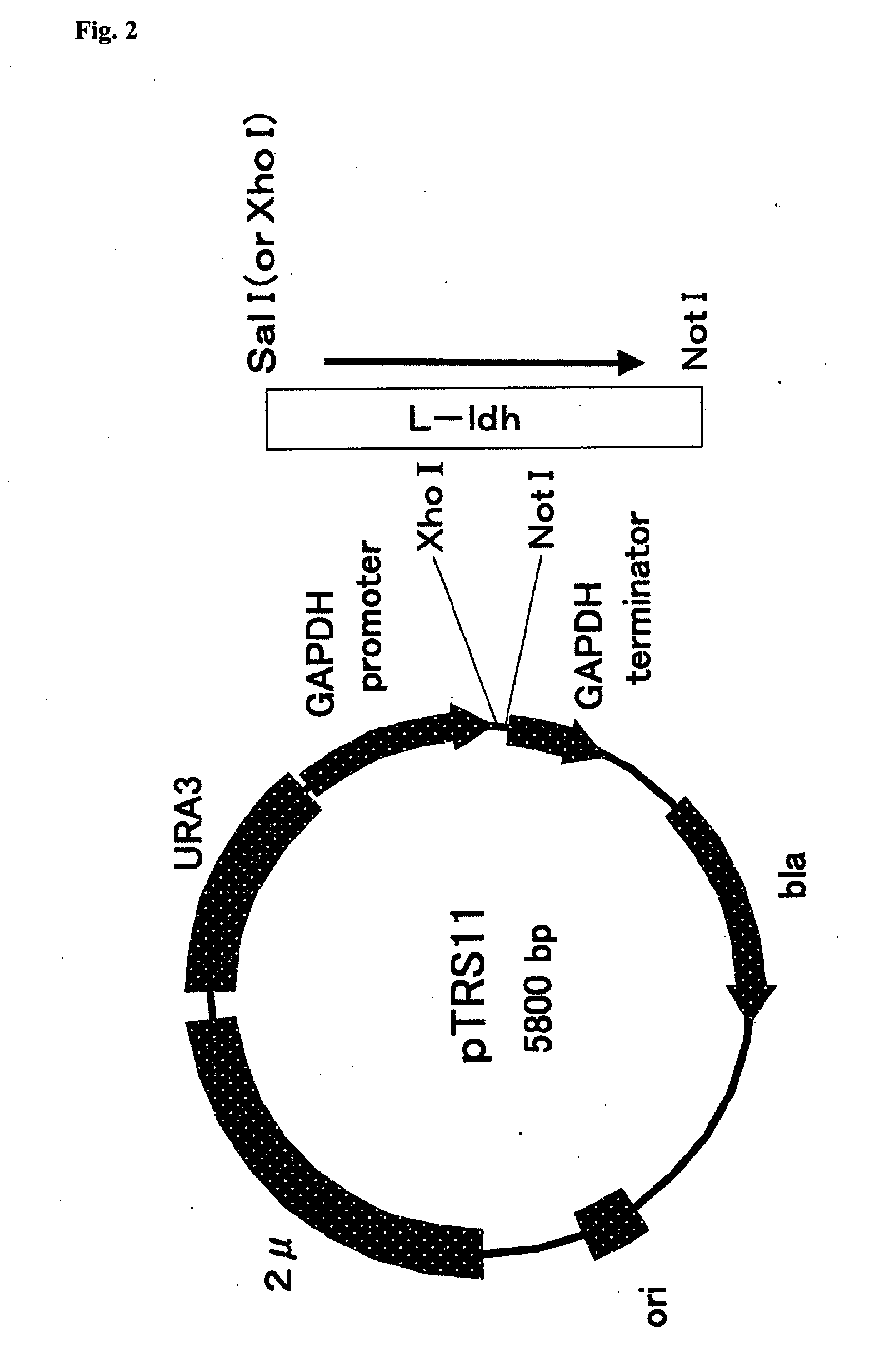Yeast and Method of Producing L-Lactic Acid
a technology of lactic acid and yeast, which is applied in the field of yeast and lactic acid production methods, can solve the problems of deterioration in sugar-consumption rate, elongation of fermentation period, and additional cos
- Summary
- Abstract
- Description
- Claims
- Application Information
AI Technical Summary
Problems solved by technology
Method used
Image
Examples
example 1
Preparation of Homo sapiens- or Frog-Derived L-ldh Gene-Expressing Plasmid
[0142]A L-ldh gene having the nucleotide sequence shown in SEQ ID No. 1 was used as the Homo sapiens-derived L-ldh gene, and a Xenopus laevis-derived L-ldh gene having the nucleotide sequence shown in SEQ ID No. 2 as the frog-derived L-ldh gene. Cloning of the Homo sapiens- or frog-derived L-ldh gene was performed by the PCR method. A Homo sapiens breast cancer cell line-derived cDNA was used as the template, in PCR for preparation of the Homo sapiens-derived L-ldh gene. In preparation of the cDNA from the Homo sapiens breast cancer cell line, it was prepared by culturing and collecting the Homo sapiens breast cancer cell line (MCF-7), extracting the total RNA with a TRIZOL Reagent (manufactured by manufactured by Invitrogen), and performing reverse transcription reaction using the obtained total RNA as the template and a Super Script Choice System (Invitrogen). Specifically, these operations were performed ac...
example 2
Preparation of pdc1 Gene-Deficient Strain
[0148]Saccharomyces cerevisiae NBRC10505 in which the PDC1 gene on the genomic DNA is substituted with the TRP1 gene (hereinafter, abbreviated as Δpdc1 strain) was prepared by homologous recombination method. The Δpdc1 strain was prepared in the following manner: A DNA fragment having an inserted sequence shown in SEQ ID No. 12 at 5′-sided upstream of the TRP1 gene and an inserted sequence shown in SEQ ID No. 13 at 3′-sided downstream thereof was amplified, in PCR using plasmid pRS424 as a template and DNAs shown in SEQ ID Nos. 10 and 11 as a primer set. Amplified DNA fragments were purified, and NBRC10505 strain was transformed with 1 μg of the DNA into a tryptophan non-requiring strain. The transformant obtained was designated as SW029 strain.
example 3
Introduction of Homo sapiens- or Frog-Derived L-ldh Gene-Expressing Plasmid into Yeast
[0149]The SW029 strain was transformed into a uracil-non-requiring strain with pTRS48 or pTRS102 obtained in Example 1. The Homo sapiens- or frog-derived L-ldh gene-expressing plasmid was introduced into the transformant thus obtained, and the introduction was confirmed, by extracting the genome from the transformant and by PCR analysis using it as a template. The confirmation primers used were the primers used in cloning of each L-ldh gene (Homo sapiens-derived L-ldh gene: SEQ ID Nos. 4 and 5, frog-derived L-ldh gene: SEQ ID Nos. 6 and 7). As a result, the transformant with pTRS48 or pTRS102 was found to have a Homo sapiens- or frog-derived L-ldh gene introduced. Hereinafter, the transformants having the inserted pTRS48 and pTRS102 were designated respectively as SW029 / pTRS48 strain and SW029 / pTRS102 strain.
PUM
 Login to View More
Login to View More Abstract
Description
Claims
Application Information
 Login to View More
Login to View More - R&D
- Intellectual Property
- Life Sciences
- Materials
- Tech Scout
- Unparalleled Data Quality
- Higher Quality Content
- 60% Fewer Hallucinations
Browse by: Latest US Patents, China's latest patents, Technical Efficacy Thesaurus, Application Domain, Technology Topic, Popular Technical Reports.
© 2025 PatSnap. All rights reserved.Legal|Privacy policy|Modern Slavery Act Transparency Statement|Sitemap|About US| Contact US: help@patsnap.com



